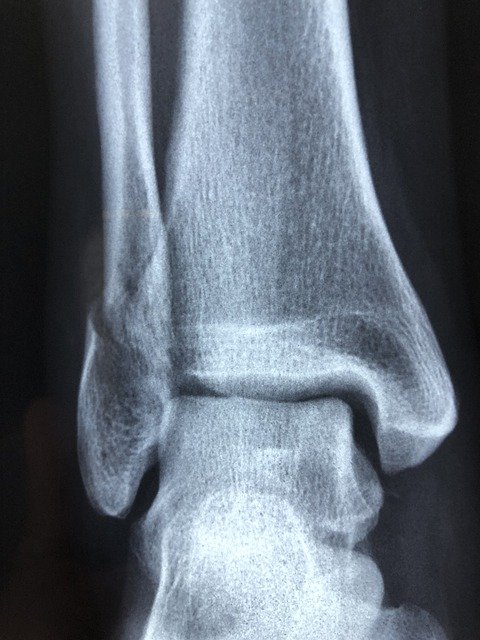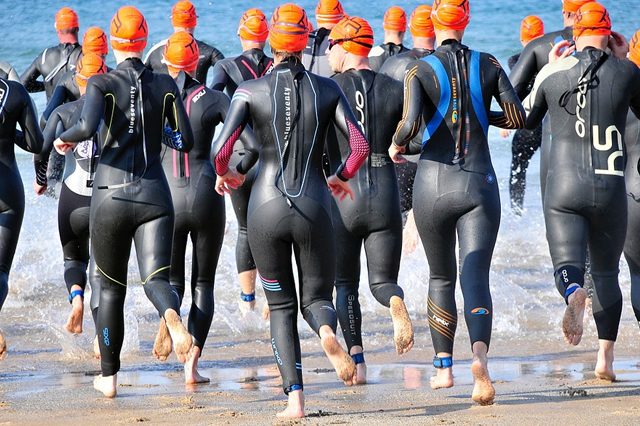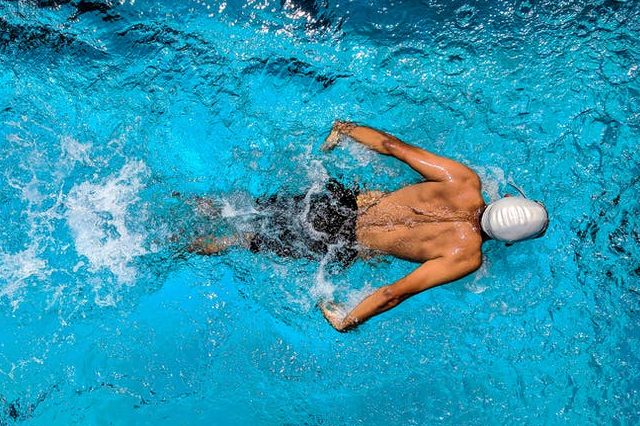It is normal that, when practicing some intense activity, whether it is walking fast or working out in the gym, there is the possibility of suffering some type of injury. Actually, for those who play sports or lead a very active life, this idea is not unreal or uncommon.

Injuries usually occur when a wrong movement is performed, when an exercise is not done well, when the warm-up prior to physical activity is ignored, or when the body’s capabilities are pushed to the limit.
One of the most common injuries are sprains. These are sprains in the ligaments that occur when they are overstretched or when the joint is placed in an unnatural position.
There are different types of sprains, but the most common are ankle sprains and athletes are the most likely to suffer from them. Since they cause a lot of pain and disable the person for some time until recovery, it is important to be informed about how to prevent them.
If you are an athlete or do a lot of physical activity, you are likely to be especially interested in this particular topic. However, you have come to the right place! In this opportunity we will be sharing with your information that will be very useful to you. For example, what is a sprain? What are your causes? What symptoms does it produce? How can you prevent it? etc.
Having this information at hand will make it possible to avoid recurrences, something that is very common when the necessary care for full recovery is not taken into account and that can bring dire consequences, especially for those who are dedicated to sports at a professional level.
Therefore, pay close attention and do not miss any detail. Remember that health should always come first, because other activities depend on it.
Instructions to avoid a sprain
Since you already know what a sprain is, it is important that you are clear that it has different types of degrees depending on the damage they have caused. There are those of grade 1, which are those that produce a distension of the ligaments, but without breaking.
There are grade 2 sprains, which are those that occur when there is a partial tear of the tissue that makes up the ligament and, finally, there are grade 3 sprains, which are those that occur when there is a complete tear of the ligament.
Although they most often occur in the ankles, in the case of athletes, they can also occur in the knees, wrists, and fingers.
There are situations that contribute to sprains. For example, walking on slippery or uneven surfaces, having muscle fatigue, having inappropriate sports equipment, such as shoes that are in poor condition or the wrong size.
When you’re really tired, you’re much more likely to end up succumbing to various forces that can strain your joints to the point of spraining and even breaking them.
Some of its symptoms are pain, swelling, bruising, limitation to move the affected joints, joint stiffness, etc. For this reason, when suffering this type of injury, it is best to visit a specialist in trauma or orthopedics.
Of course, the ideal would be to prevent these injuries. But how can you do it? Following these instructions:
- Do muscle stretching. The muscles can protect the ankle region by tightening the area and preventing damage to the joint when a blow or fall occurs. However, for this to be achieved, it must be well trained, while working on coordination, agility, balance, etc.
- Balance your legs. While it is true that we can all have a dominant limb. When you have one more trained than the other, it creates an imbalance that makes the possibility of suffering an injury, especially a sprain, more real. For this reason, the recommendation is that you train both limbs in order to achieve optimal muscle development that helps prevent sprains. In fact, if you manage to train your entire body, you will get better results when it comes to maintaining your balance.
- Works the proprioceptive capacity. In plain language, what it means is that you should learn to step well, as this increases strength and coordination. In addition, it reduces the possibility of suffering a sprain by up to 90%.
Performing these types of exercises may seem complicated, but the reality is that they are very simple and anyone can do them. It is about stepping on surfaces that are not stable or causing situations of bodily instability, such as jumping on one foot, to have greater control of the movements you make daily.
Now, what else do you need to know about how to prevent sprains? Let’s see it.
What do you need to avoid a sprain?
To achieve this, you do not need a series of material elements. Rather, you should consider the following:
Do not be afraid
This may be easier said than done, but the truth is that it is not impossible. Those who have suffered an injury are often afraid that it will happen again, because it is a very real possibility. However, this fear makes the person walk differently, run differently and even act differently without realizing it.
Not using the affected area in the normal way makes it difficult for it to reintegrate into the body’s scheme, to respond to stimuli and to be able to be prepared to assume another risk situation that can cause a new injury.
So you not only need to work the body, but also the mind, as this is responsible for making it move and act completely normally, as it did before the injury.
Make a full recovery
In the event that you have sustained an injury, you should take the time necessary to fully recover. Otherwise, you could injure yourself again, which you don’t want to happen.
After an injury, the muscles are weak and the foot cannot move naturally. The body is not in a position to respond to situations that could destabilize it, so it is prone to suffering a new injury.
For this reason, it is important that you visit the doctor continuously, to check how the injury is progressing, as well as the physiotherapist to guide you towards the path of recovery. In addition, it will indicate the type of training you should take to prevent a new injury.
In addition to the above, there are other habits that you need to include in your daily routine, such as warming up before doing any physical activity. For example, neck rotations, hip rotations, ankle rotations, squats without added weight, stretching, light jogging, etc.
You also need to wear the appropriate footwear for sports activities and be very careful when walking on uneven or irregular terrain. In the case of women, it is best to refrain from wearing high-heeled shoes.
In case you have previously suffered from a sprain, use a support strap on the ankle that you have injured. That way you will be giving it additional protection, which would not hurt at all.
Above all things, do not engage in any sport or physical activity that you have not previously become familiar with through training.
Now, as you may have realized, the best way to prevent a new sprain is to treat a previous injury very well. For this reason, pay close attention to the following recommendations.
Tips to avoid a sprain
When suffering from a sprained ankle, it is essential to follow these tips:
- Get enough rest. By overloading the injured area, its recovery is much slower and it produces disabling pain.
- Apply ice. You can apply ice packs directly to yourself or place your foot up to the ankle in a bowl of ice water. Do this for about 15 seconds every two to three hours. This is highly recommended for these problems.
- However, you must bear in mind that the tolerance threshold is different from one person to another. Also, if you are going to ice the ankle directly, use a cotton towel to prevent frostbite.
- Use a compression bandage. Keeping the affected area compressed can help reduce swelling. Of course, to obtain this result, you must adjust it correctly, so that the free circulation of blood is not affected.
- Keep your ankle elevated. The foot should be above the level of the heart in order to reduce swelling and achieve effective drainage, especially when lying down.
- After you have completed the recovery time established by the specialist doctor, you can begin the rehabilitation process, taking into account your current situation.
These physiotherapy exercises aim to fully recover the mobility of the affected part, as well as its strength, stability and flexibility. Of course, you can’t make moves that you think are appropriate. Rather, you should always follow the guidelines that professionals give you and stay under their supervision.
Do not try to force the injured part ahead of time, as this could only lead to worsening its current situation and end up lengthening the recovery time. In fact, you could end up permanently affecting the area by making it more vulnerable to other types of more serious injuries.
Therefore, if you want to return to your normal daily routine, or if you want to return to practicing your favorite sport, the best thing you can do is recover well by keeping the necessary rest. Of course, if you have never had a sprain, now you have the necessary knowledge to prevent them and avoid the painful consequences that this injury brings.





